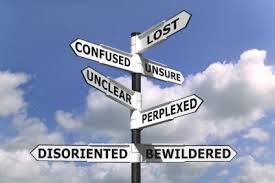Strategies are so often put at risk because it’s not really understood or known by those who actually have to implement it day-to-day.
Read more in the article below, which features today in Silicon Valley Business Journal, Yahoo! Finance, and Strategize magazine amongst others.
Majority of Company Strategies in Jeopardy
Business Leaders Need to Better Align Employees with Overall Vision
SAN FRANCISCO, Dec. 18, 2013 – Too many company strategies falter due to poor leadership alignment and low employee engagement, according to strategy expert Sarah Thrift.
A staggering 95% of a company’s employees are unaware of, or do not understand, the strategy, according to research by Robert S. Kaplan and David P. Norton . Even among high performing companies with “clearly articulated public strategies,†recent research by Timothy Devinney suggests that only 29% of their employees can correctly identify their company’s strategy out of six choices.
If a strategy is to succeed, every member of an organization needs to understand his role in making the strategy a reality, says Thrift, whose organization Insight Consultancy Solutions, Inc. has partnered with organizations across North America and Europe.
“It does not matter how clever your strategy is, if employees don’t understand what it is, then there is no chance for their actions to be in line with what needs to happen.†Thrift says. “Each person needs to continuously ask themselves how the work they do relates to the strategy. If there is no clear link, then don’t do it.â€
Part of the challenge is a poor understanding of what it means to create support behind a vision. Research published by Julie Straw et al. suggests that that only 47 percent of leaders have a clear understanding of what “building alignment†means.
Mary Barra, the new CEO of GM shared in a YouTube interview with Fortune Magazine a breakthrough moment as a leader. She was running a GM assembly plant and realized “I’ve got to motivate everyone to want to pull in the same direction and not just naturally assume that it’s going to happen like it might in a small team.â€
A starting point towards better employee engagement is for organizations to gauge the leadership team’s level of alignment around the strategy, says Thrift who helps organizations transform through periods of change.
“If the leadership team is not pulling in the same direction, there is no chance for the rest of the organization to do so†says Thrift.
“Sometimes the leadership team knows it is not in alignment and that differences need to be addressed†says Thrift. “The silent killer is when leadership teams assume they are in alignment when they are not.â€
“Differences between leaders may seem small, but these differences can become very big when projected through layers of an organization. Before you know it, each division is leaning in a different direction, which is death for the strategy,†Thrift says.
“The best leaders I have worked with are the ones who make it a priority to create alignment with their peers and in their teams. They are the ones who make the objectives of the organization really clear and make sure that everyone knows how their individual role ties-in.†she says.


